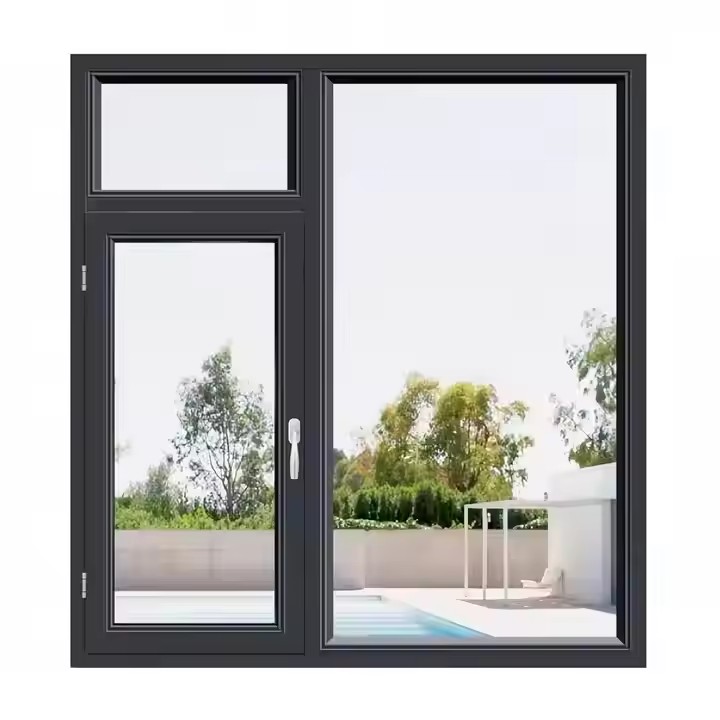- Transportation Challenges
International shipping involves numerous procedures and inspections, all of which must pass through customs. Many related documents and preparations must be completed in advance to avoid risks during export.
Doors and windows are typically large and heavy, so they’re usually shipped by sea or rail. Air transport is too expensive and is only considered for urgent or high-value orders. However, sea shipping takes a long time — for example, from China to Europe can take 25 to 40 days; rail is faster (e.g., China-Europe Railway takes 12 to 18 days), but the longer the transit time, the greater the chance of issues. If unexpected events arise — like geopolitical tension in the Red Sea forcing ships to detour around the Cape of Good Hope — delivery can be delayed by weeks. This may frustrate overseas customers, lead to contractual penalties, or even harm future partnerships.
If shipments miss peak sales seasons (like the pre-winter window replacement season in Europe and the US), the unsold products may end up sitting in warehouses, taking up space and tying up capital.

Even if the shipping time is on schedule, doors and windows are prone to damage in transit. The glass is fragile, and the frames are sensitive to bumps. If packaging is weak — with flimsy boxes, insufficient foam or padding, or poor binding — rough handling during loading/unloading can result in cracks or deformations. Moisture and salty air at sea can cause corrosion or rust on metal parts, or peel off coatings, which damages both appearance and quality.
Furthermore, transportation costs are highly volatile. When oil prices rise, so do freight costs. Increased Suez Canal tolls or new regulations (like the EU’s carbon tax on shipping) also raise shipping expenses. If companies don’t account for these changes ahead of time, their profit margins may shrink or even turn into losses.
- Customs Clearance Difficulties
When the products arrive abroad, they must go through customs clearance, which involves many rules. Tariffs vary by country and change frequently. For example, the US imposes high anti-dumping duties on Chinese aluminum doors and windows — some companies face excessive tariffs, making their products uncompetitive and hard to sell.
Besides tariffs, there are strict standards and certifications. The EU, for instance, requires compliance with various quality, safety, and environmental regulations. Doors and windows must pass multiple tests and obtain CE certification before they can be sold locally. These tests take time and money, and if a product doesn’t meet the standards, it will be detained by customs — wasting earlier efforts and incurring extra costs.
Customs declarations are also prone to errors. Different types, materials, and uses of doors and windows require different HS codes. Any mistake can result in overpayment of tariffs or fines for underpayment. Declarations require a full set of documents — certificate of origin, quality inspection report, product specifications, etc. — and missing or incorrect documents can prevent clearance and cause the goods to be held at port, incurring storage fees daily.
- Supply Chain and Financial Issues
Producing doors and windows depends on raw materials like aluminum, glass, and hardware. If the supply chain faces disruptions — for example, a price surge in aluminum due to global events, or delays from suppliers due to pandemics or natural disasters — companies must either absorb higher costs or face delays in production and delivery.
Some companies stock inventory in overseas warehouses to mitigate supply risks, but this also carries dangers. If demand is misjudged and the stock doesn’t sell, it gets stuck in warehouses, tying up funds and incurring high storage costs.

Then there’s the issue of payment. Export deals are typically settled in USD or EUR, and exchange rates fluctuate daily. If the RMB strengthens, the converted revenue shrinks, cutting into profits. Some foreign buyers prefer to pay on credit — only after the goods are sold. If they default or go bankrupt, the exporter may never receive payment. Even using letters of credit, companies must be cautious: if there’s any discrepancy between documents and the credit terms, banks can refuse payment.
- Legal and Intellectual Property Challenges
When signing contracts with foreign clients, unclear terms can lead to disputes later on. For example, if it’s not clearly stated how to handle late deliveries or product defects, both parties may argue over liability, leading to legal action. Legal systems differ across countries, and if the contract doesn’t specify the applicable law, lawsuits can become complex, costly, and time-consuming.
It’s crucial to understand relevant legal knowledge and agree on dispute resolution mechanisms in advance, so any future problems can be handled smoothly without unexpected setbacks.

